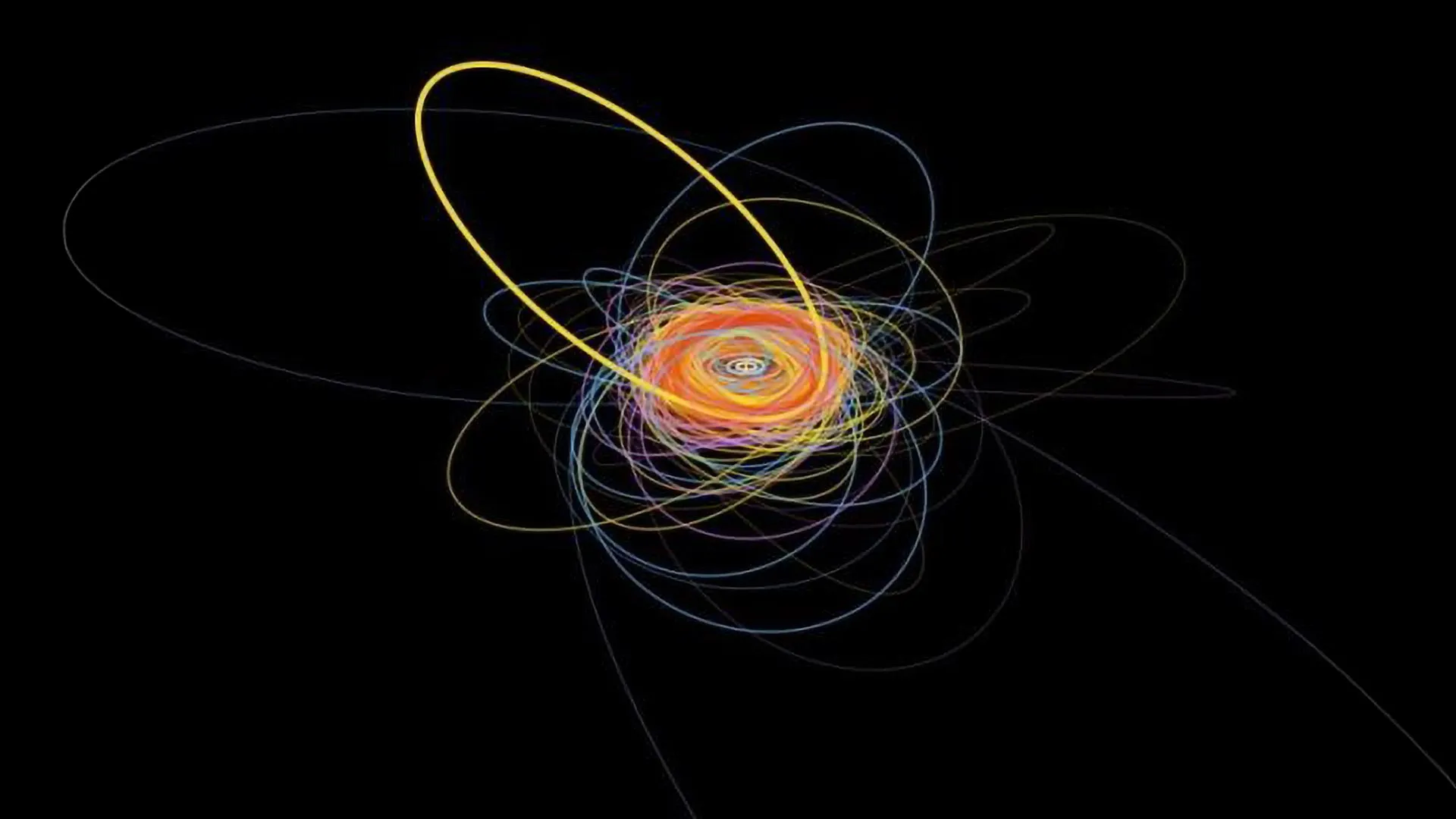Mysterious object found dancing with Neptune
This object, called 2020 VN40, is the first confirmed body that orbits the sun once for every ten orbits Neptune completes.
- Date:
- July 20, 2025
- Source:
- Center for Astrophysics | Harvard & Smithsonian
- Summary:
- Astronomers have discovered a bizarre object in the outer solar system, 2020 VN40, that dances to Neptune’s gravitational beat in a never-before-seen rhythm. It’s the first of its kind, orbiting the Sun once for every ten orbits of Neptune, and could reshape how we understand the movement and evolution of distant cosmic bodies.
- Share:

A team of astronomers led by the Center for Astrophysics | Harvard & Smithsonian has discovered a rare object far beyond Neptune, from a class known as trans-Neptunian objects, that is moving in rhythm with the giant planet. This object, called 2020 VN40, is the first confirmed body that orbits the sun once for every ten orbits Neptune completes.
This discovery helps scientists understand how objects in the outer solar system behave and how they got there. It supports the idea that many distant objects are temporarily "caught" in Neptune's gravity as they drift through space.
"This is a big step in understanding the outer solar system," said Rosemary Pike, lead researcher from the Center for Astrophysics | Harvard & Smithsonian. "It shows that even very distant regions influenced by Neptune can contain objects, and it gives us new clues about how the solar system evolved."
The finding was published this month in The Planetary Science Journal, a publication of the American Astronomical Society.
The discovery was made by the Large inclination Distant Objects (LiDO) survey, which searched for unusual objects in the outer solar system. This survey used the Canada-France-Hawaii Telescope for the main survey operations, and Gemini Observatory and Magellan Baade for additional observations.
The survey was designed to search for bodies with orbits that extend far above and below the plane of the Earth's orbit around the sun, part of the outer solar system that hasn't been well-studied.
"It has been fascinating to learn how many small bodies in the solar system exist on these very large, very tilted orbits," said Dr. Samantha Lawler (University of Regina), a core member of the LiDO team. The object's average distance is about 140 times farther from the sun than Earth and follows a very tilted path around the solar system.
What makes 2020 VN40 even more interesting is how it moves compared to Neptune. Most objects with a simple ratio of the duration of their orbit compared to the duration of Neptune's orbit always come closest to the sun when Neptune is far away. In contrast, 2020 VN40 comes closest to the sun when Neptune is very close by, if you look at their positions from above the solar system. The tilt of 2020 VN40's orbit means that the objects are not actually close, because 2020 VN40 is actually far below the solar system- they only appear close when flattened onto a map. All other known resonant trans-Neptunian objects orbit such that they avoid this alignment at their closest approach to the sun, even in the flattened view.
"This new motion is like finding a hidden rhythm in a song we thought we knew," said Ruth Murray-Clay (University of California Santa Cruz), co-author of the study. "It could change how we think about the way distant objects move."
These findings suggest that highly tilted orbits can lead to new and unexpected types of motion. The LiDO survey has already found over 140 distant objects, and more discoveries are expected from future surveys. With telescopes like the Vera C. Rubin Observatory, scientists hope to find many more objects like 2020 VN40.
"This is just the beginning," said Kathryn Volk of the Planetary Science Institute. "We're opening a new window into the solar system's past."
Story Source:
Materials provided by Center for Astrophysics | Harvard & Smithsonian. Note: Content may be edited for style and length.
Journal Reference:
- Rosemary E. Pike, Ruth Murray-Clay, Kathryn Volk, Mike Alexandersen, Mark Comte, Samantha M. Lawler, Ying-Tung 英同 Chen 陳, Arcelia Hermosillo Ruiz, Cameron Semenchuck, Cameron Collyer, J. J. Kavelaars, Lowell Peltier. LiDO: Discovery of a 10:1 Resonator with a Novel Libration State. The Planetary Science Journal, 2025; 6 (7): 156 DOI: 10.3847/PSJ/addd22
Cite This Page: